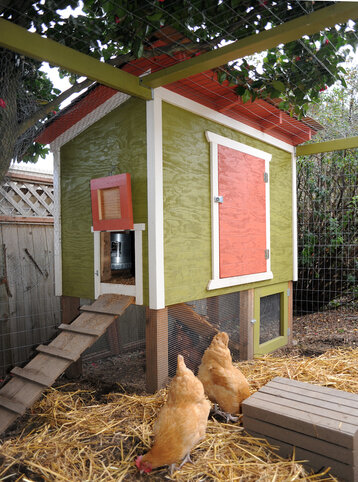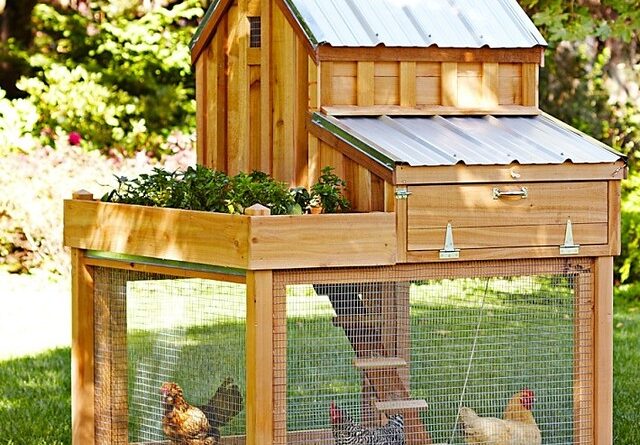Maximizing Best Space and Comfort: Small Chicken Coop Interior Layout
Introduction:
Welcome to our comprehensive guide on optimizing small chicken coop interior layout! Whether you’re a novice or an experienced poultry keeper, designing an efficient and comfortable living space for your feathered friends is crucial for their health and productivity. In this blog post, we’ll explore small chicken coop interior layout strategies, tips, and best practices to maximise limited space while ensuring your chickens are happy and thriving.
Understanding the Importance of small chicken coop interior layout:
The interior layout of a small chicken coop interior layout plays a significant role in the well-being of your flock. A well-designed layout maximises available space and promotes good ventilation, cleanliness, and ease of maintenance. Additionally, it can reduce stress among the chickens, ultimately leading to better egg production and overall health.
small chicken coop interior layout might seem like a minor detail compared to other aspects of poultry farming, but its importance must be balanced. A well-designed interior layout can significantly impact your flock’s health, comfort, and productivity. Here’s why understanding and optimizing the internal layout of your small chicken coop interior layout is crucial:
Maximizing Space: In small chicken coop interior layout, every square inch counts. A thoughtful small chicken coop interior layout lets you make the most of limited space, ensuring your chickens have enough room to move around comfortably without feeling cramped. By efficiently organizing nesting boxes, perches, feeding stations, and other amenities, you can create a functional and spacious environment for your flock.
Promoting Ventilation: Proper ventilation is essential for maintaining good air quality inside the coop. A well-designed interior layout facilitates airflow, helping to remove excess moisture, ammonia, and other pollutants that can accumulate in confined spaces. Adequate ventilation reduces your chickens’ risk of respiratory problems and other health issues, leading to happier and more robust birds.
Facilitating Cleaning and Maintenance: Keeping the coop clean is essential for preventing the spread of diseases and parasites. An interior layout that prioritizes easy cleaning and maintenance makes this task much more manageable. By strategically placing nesting boxes, perches, and other fixtures, you can minimize hiding spots for dirt, debris, and pests, making it easier to keep the coop sanitary and hygienic.
Preventing Stress and Aggression: Chickens are social animals with complex social hierarchies. A well-designed interior layout can lead to overcrowding, resource competition, and territorial disputes among flock members. By providing ample space, separate areas for feeding and nesting, and strategically positioned perches and hiding spots, you can reduce stress and aggression within the flock, promoting harmony and well-being.
Enhancing Egg Production: A comfortable and stress-free environment is conducive to optimal egg production. Happy and healthy chickens are more likely to lay consistently and produce high-quality eggs. By designing the interior layout with the chickens’ needs in mind, you create an environment where they feel safe, secure, and comfortable, ultimately leading to better productivity and profitability for the flock owner.

Factors to Consider Before small chicken coop interior layout Designing:
Before diving into the specifics of small chicken coop interior layout, it’s essential to consider several factors that will influence your decisions:
1. Number of Chickens: The size and layout of your coop will largely depend on the number of chickens you plan to keep. Ensure enough space for each bird to move around comfortably and access essential amenities.
2. Climate: Your small chicken coop interior layout design should be tailored to the local climate conditions. Consider insulation for colder regions and adequate ventilation for warmer climates to maintain optimal temperature and airflow.
3. Predation: Protecting your small chicken coop interior layout from predators is paramount. Incorporate sturdy materials and secure locks into your design to prevent unauthorized access by predators like raccoons, foxes, and rats.
4. Ease of Cleaning: A clean coop is vital for preventing diseases and maintaining the overall health of your flock. Design the layout with easy-to-clean surfaces and accessible nesting boxes and perches.
Now, let’s delve into the specific elements of a small chicken coop interior layout:
1. Nesting Boxes:
Nesting boxes provide a cozy and secluded space for hens to lay eggs. When designing your coop’s layout, allocate sufficient nesting boxes based on the number of chickens you have. A general rule of thumb is one nesting box for every three to four hens. Place them off the ground and in a quiet corner to ensure privacy and minimize disturbances.
2. Roosting Perches:
Roosting perches are essential for chickens to rest and sleep comfortably. Install sturdy perches at varying heights to accommodate the natural pecking order within the flock. Space them apart adequately to prevent overcrowding and potential aggression among birds. Consider using rounded perches to avoid foot injuries and provide a more ergonomic roosting surface.
3. Feeding and Watering Stations:
Designate specific areas within the coop for feeding and watering. Use durable and easy-to-clean feeders and waterers to ensure a constant food and fresh water supply. Position them away from nesting boxes to prevent contamination and bedding soiling. Elevate the feeders and waterers to minimize spillage and keep them clean.
4. Ventilation and Light:
Proper ventilation is critical for maintaining good air quality and regulating temperature and humidity levels inside the coop. Incorporate windows, vents, or fans to promote airflow without creating drafts. Natural light is also essential for the chickens’ well-being and egg production. Position windows or skylights strategically to maximize natural light exposure while minimizing direct sunlight to prevent overheating.
5. Flooring and Bedding:
Choose flooring materials that are durable, easy to clean, and provide good traction for chickens. Common options include concrete, hardwood, or vinyl flooring covered with a layer of absorbent bedding material such as straw, wood shavings, or sand. Regularly remove soiled bedding and replace it with fresh material to maintain cleanliness and prevent odours and bacterial growth.
6. Storage and Accessibility:
Consider incorporating storage areas within the coop for keeping feed, bedding, and other supplies organized and easily accessible. Use hooks, shelves, or bins to maximize vertical space and clear the floor area. Ensure that all storage compartments are securely sealed to prevent pests and rodents from accessing the contents.

Space-saving Feeding and Watering Solutions:
Traditional feeders and waterers can take up valuable floor space in a small chicken coop interior layout. To maximize space efficiency, consider using hanging or wall-mounted feeders and waterers. These options free up floor space and keep the feed and water clean and easily accessible for your chickens. You can also opt for automatic or gravity-fed systems that require less frequent refilling, saving you time and effort in the long run.
Utilize Wire Mesh for Separation:
If you have limited space but want to separate different coop areas, consider using wire mesh partitions instead of solid walls. Wire mesh partitions provide visibility and airflow while providing a barrier between nesting boxes, roosting areas, and feeding stations. This allows you to create separate zones within the coop without sacrificing space or natural light.
Incorporate Portable or Modular Elements:
For ultimate flexibility in small chicken coop interior layout, consider incorporating portable or modular elements that can be easily rearranged or removed. Portable nesting boxes, lightweight roosting bars, and modular shelving units are versatile elements that can adapt to your changing needs. This allows you to customize the layout of the coop based on factors such as the number of chickens, seasonal changes, or maintenance requirements.
Consider External Attachments:
If space inside the coop is limited, consider adding external attachments such as covered runs or outdoor enclosures. These additions provide additional living space for your chickens to roam and forage while keeping them safe from predators and the elements. You can attach runs directly to the coop or build separate enclosures nearby, depending on the layout of your property and the available space.
Implement Space-saving Storage Solutions:
Storage space can take a lot of work in a small chicken coop. To keep essential supplies such as feed, bedding, and cleaning tools organized and accessible, consider incorporating space-saving storage solutions into the design. Wall-mounted shelves, hanging baskets, and stackable bins are all excellent options for maximizing vertical space and tidying supplies. Make sure to label storage containers for easy identification and inventory management.
Optimize for Easy Egg Collection:
Egg collection is a daily task in any chicken coop, so designing the layout with easy access to nesting boxes is essential. Position nesting boxes at a comfortable height for you to reach without bending or stooping, and consider installing hinged lids or removable dividers for quick and easy egg retrieval. Keep the nesting area well-lit and obstacles-free to make the process as smooth and efficient as possible.
Create a Comfortable Resting Area:
In addition to roosting bars, provide your chickens with a comfortable resting area to relax and socialize during the day. This can be a simple platform or bench covered with soft bedding material, located away from high-traffic areas and potential disturbances. Adding natural perches or branches can also provide enrichment and encourage natural behaviours such as perching and jumping.
Conclusion:
Designing an efficient and comfortable interior layout for a small chicken coop requires careful planning and consideration of various factors. By prioritizing space optimization, ventilation, cleanliness, and accessibility, you can create a healthy and productive living environment for your flock. Whether you’re a backyard hobbyist or a commercial poultry farmer, investing time and effort into interior layout design will ultimately benefit you and your chickens in the long run. Happy coop designing!

